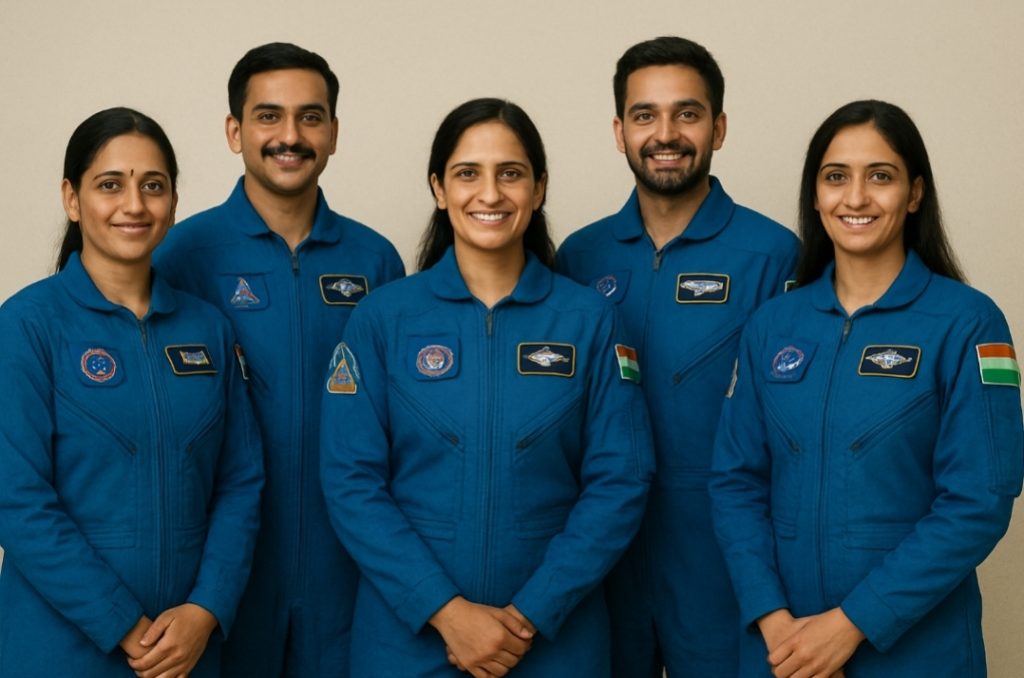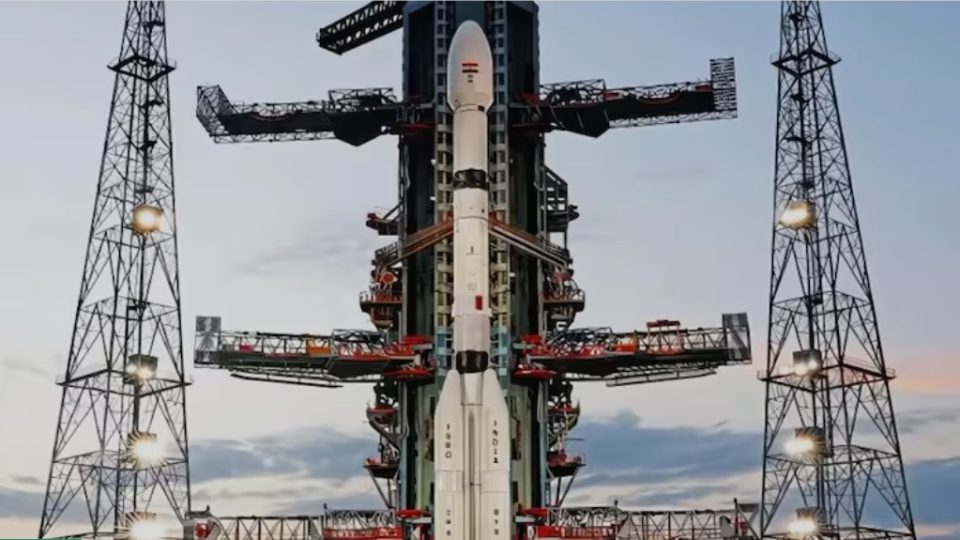India’s Revolutionary Space Leap: Breaking Traditional Barriers in the Final Frontier
Historic Shift Transforms Nation’s Astronaut Selection
India’s space program is undergoing a revolutionary transformation. Furthermore, this change promises to democratize space exploration like never before. Additionally, the announcement marks a departure from decades of military-exclusive astronaut selection.
Breaking the Air Force Monopoly
Traditionally, India’s astronaut selection remained restricted to elite Air Force personnel. However, this approach limited the talent pool significantly. Moreover, the current Gaganyaan mission features four male Air Force test pilots exclusively. Nevertheless, ISRO officials recognize the need for broader representation.
According to senior ISRO officials, “The astronaut pool will not be restricted to the Air Force alone”. Furthermore, officials explained that “globally, it’s not just researchers but also entrepreneurs who are travelling to space”. Consequently, this shift reflects international trends in space exploration.
The initial selection criteria required extensive pilot experience. Specifically, the first batch needed “very experienced pilots” because “the vehicle is still under testing and development”. Therefore, military aviators represented the safest choice initially.
Women’s Historic Entry into Indian Aviation
Significantly, women’s inclusion builds on recent military aviation breakthroughs. Remarkably, the Indian Air Force only began inducting women fighter pilots in 2016. Additionally, the program started as an experimental initiative initially.
The first three women fighter pilots – Avani Chaturvedi, Bhawana Kanth, and Mohana Singh – blazed trails in Indian aviation. Furthermore, their success demonstrated women’s combat capabilities effectively. Subsequently, the program became permanent in 2022.
More recently, Sub Lieutenant Astha Poonia became the first woman naval fighter pilot in 2025. Consequently, this achievement opened another military aviation frontier for women. Additionally, her selection highlights the navy’s commitment to gender inclusivity.
Group Captain Shukla’s Groundbreaking Mission
Meanwhile, Group Captain Shubhanshu Shukla’s recent achievements demonstrate India’s growing space capabilities. Specifically, his 18-day mission aboard the International Space Station concluded successfully in July 2025. Moreover, he conducted 60 scientific experiments during his stay.
The mission cost approximately ₹548 crore ($65 million) for India. However, officials defend this investment citing valuable training and international collaboration benefits. Furthermore, the experience provides crucial insights for the Gaganyaan program.
Shukla’s historic journey represented the first Indian astronaut visit to the ISS. Additionally, his mission strengthened international space cooperation significantly. Consequently, his success validates India’s human spaceflight ambitions.
Ambitious Space Timeline Unveiled
India’s space roadmap extends through 2040 ambitiously. First, the Gaganyaan mission targets 2027 for launch. Subsequently, the Bharatiya Antariksh Station aims for 2035 completion. Finally, a manned Moon mission targets 2040.
Prime Minister Modi emphasized building a pool of 40-50 astronauts. Furthermore, this number supports sustained human spaceflight missions effectively. Additionally, the expanded pool enables multiple simultaneous missions.
The timeline reflects India’s growing space confidence significantly. Moreover, these missions position India among elite spacefaring nations globally. Consequently, the program supports India’s Viksit Bharat 2047 vision.
Global Context of Inclusive Space Exploration
Internationally, space agencies are embracing diversity increasingly. NASA’s astronaut corps now includes over 30% women. Additionally, 12 astronauts represent people of color currently. Furthermore, NASA actively promotes diversity in space exploration.
The European Space Agency similarly emphasizes inclusive astronaut selection. Moreover, private companies like SpaceX welcome diverse candidates regularly. Consequently, India’s expansion aligns with global trends perfectly.
Historically, only 11% of astronauts worldwide have been women. However, recent initiatives are changing this dramatically. Furthermore, representation gaps are closing gradually but steadily.
Private Sector Integration and Economic Impact
India’s space sector has experienced remarkable growth recently. Specifically, over 350 space startups operate currently. Additionally, the sector received $68 million in investments during 2021. Furthermore, government policies encourage private participation actively.
The space budget has nearly tripled since 2013-14. Specifically, allocations increased from ₹5,615 crore to ₹13,416 crore in 2025-26. Moreover, this growth reflects the government’s commitment strongly.
Economic projections suggest the space economy will reach $44 billion by 2033. Furthermore, the sector has contributed $60 billion to India’s GDP between 2014-2024. Additionally, every dollar generates a $2.54 multiplier effect economically.
Companies like Skyroot Aerospace and Agnikul Cosmos lead private innovation. Moreover, these startups collaborate with ISRO extensively. Consequently, public-private partnerships drive sector growth significantly.
Training and Selection Evolution
Future astronaut selection will require diverse qualifications beyond piloting. Specifically, candidates need engineering, mathematics, and astronautics knowledge. Additionally, physical and psychological resilience remain crucial requirements.
The training program transforms candidates comprehensively. Furthermore, even experienced pilots become students again during preparation. Moreover, the process develops both technical and operational capabilities.
Selection involves multidisciplinary expert teams currently. Specifically, engineering, medical, and aeronautical specialists participate. Consequently, the process ensures comprehensive candidate evaluation.
Fulfilling National Promises
The initiative fulfills Modi’s 2018 Independence Day promise. Specifically, he declared that “an Indian boy or girl will unfurl the Tricolour in space”. Furthermore, this commitment drove policy changes significantly.
Modi’s recent National Space Day address emphasized youth participation. Moreover, he invited young Indians to join the astronaut pool actively. Additionally, his message inspired nationwide interest considerably.
The announcement reflects India’s growing space confidence internationally. Furthermore, it demonstrates the nation’s commitment to inclusive exploration. Consequently, the policy change marks a historic milestone.
Technical Challenges and Infrastructure Development
ISRO continues developing advanced space technologies simultaneously. Currently, the Human-rated LVM3 vehicle undergoes final testing. Additionally, the Crew Escape System requires rigorous validation.
The Crew Module and Service Module near completion stages. Moreover, safety systems demand extensive testing protocols. Consequently, technical readiness remains paramount for mission success.
Training facilities in Bangalore support astronaut preparation currently. Furthermore, international cooperation enhances training capabilities significantly. Additionally, Russian collaboration provides valuable expertise continuously.

International Collaboration Benefits
India’s space diplomacy strengthens through inclusive programs. Specifically, diverse astronaut pools enhance international partnerships. Moreover, collaborative missions showcase India’s technological capabilities globally.
The ISS mission demonstrated successful international cooperation. Furthermore, such partnerships provide valuable learning opportunities. Additionally, they position India as a reliable space partner.
Future missions will likely involve international participants increasingly. Moreover, India’s inclusive approach attracts global attention positively. Consequently, the nation builds soft power through space achievements.
Future Implications and Opportunities
The expanded astronaut pool creates numerous opportunities ahead. First, diverse backgrounds bring varied expertise crucially. Additionally, different perspectives enhance mission planning significantly.
Commercial space ventures will benefit from qualified personnel availability. Moreover, India’s growing space industry requires skilled professionals continuously. Furthermore, the larger pool supports multiple mission tracks simultaneously.
Research capabilities expand with diverse astronaut backgrounds significantly. Additionally, varied expertise enables complex experimental programs. Consequently, scientific returns from missions increase substantially.
India’s space revolution represents more than policy change alone. Instead, it symbolizes national transformation toward inclusive excellence. Moreover, the initiative positions India as a progressive space power globally. Ultimately, this historic shift will inspire generations of aspiring space explorers across all backgrounds, ensuring India’s continued ascension in humanity’s greatest adventure.

